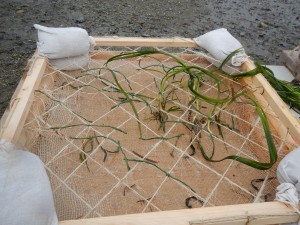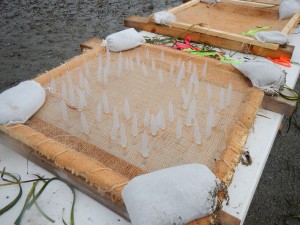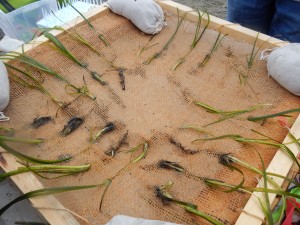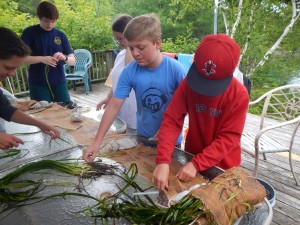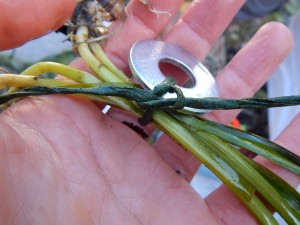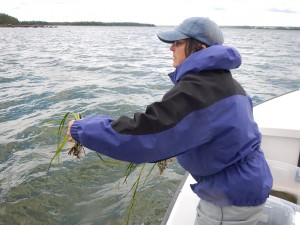The Community Environmental Health Laboratory (CEHL) tried four new methods of restoring eelgrass this past summer. The season began with the tried and true method of tying eelgrass plants onto wooden, biodegradable grids strung with twine. The up front time required to construct the grids with string and make ties from floral tape prompted the development of further prototypes. We next tried weaving plants through pieces of burlap stretched across the same biodegradable grids. We quickly realized the time required to weave eelgrass into the burlap on shore was too much. At the scale CEHL hoped to restore, both the string and the burlap grid methods necessitated too much time and effort.
Students in the Young Environmental Leaders Program created a burlap “restoration runner” weighted with sandbags. Eelgrass was woven into the seven foot long runners. Another method involved tying eelgrass onto metal washers, which were dropped from the boat into the water at the restoration site. In an effort to move away from the potential environmental impact of metal washers and decrease the cost of restoration, CEHL tried using rocks instead of washers.
To date, we have used frames with eelgrass tied to strings, frames with eelgrass woven into burlap, burlap without frames with eelgrass woven in, eelgrass tied to washers, and eelgrass tied to rocks. We are working on a seeding method. Seeding plants have been collected and are maturing in a flow-through seawater tank. Eelgrass restoration methods will continue to evolve as different challenges arise.
- Classic string grid
- Poking holes in the burlap for weaving
- A completed burlap grid
- Creating a runner
- The washer method
- Dropping washers into the water

